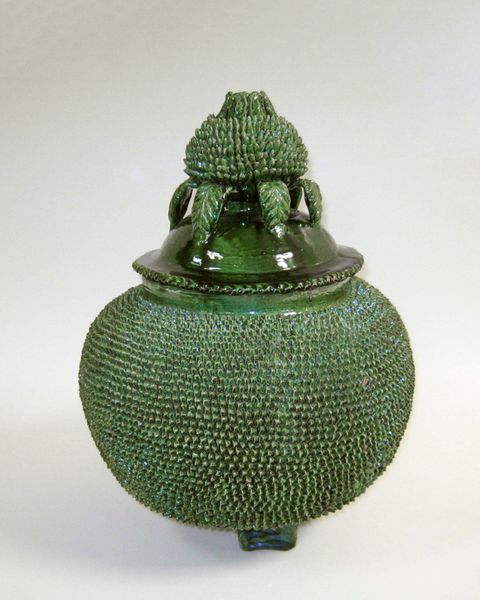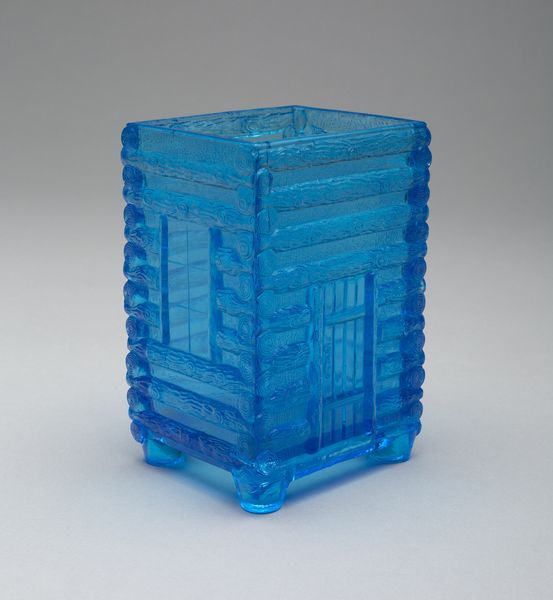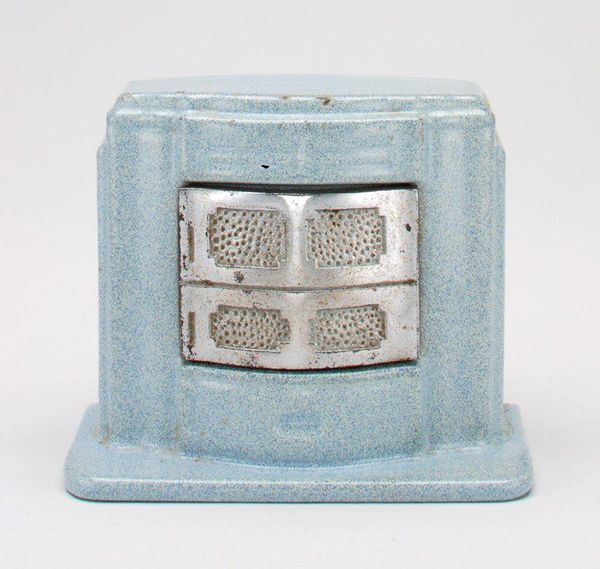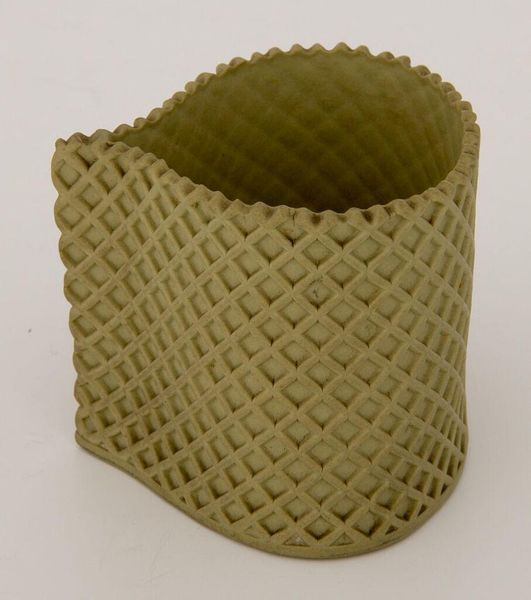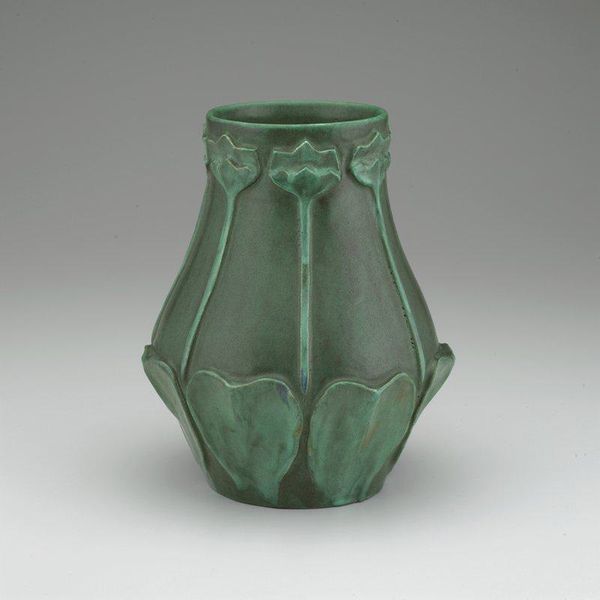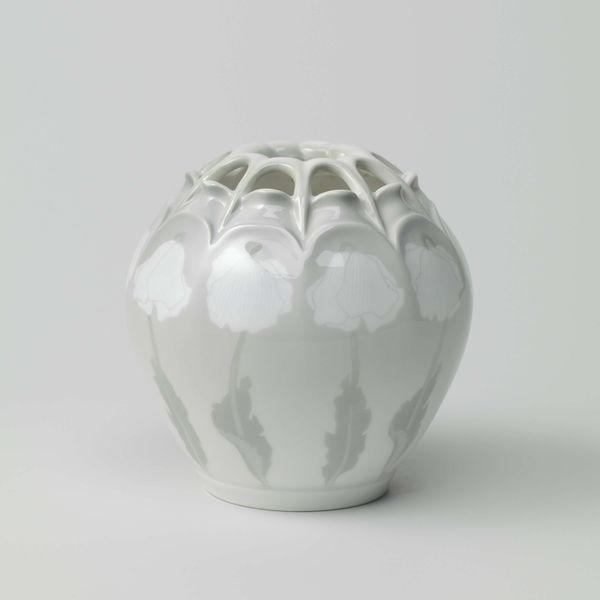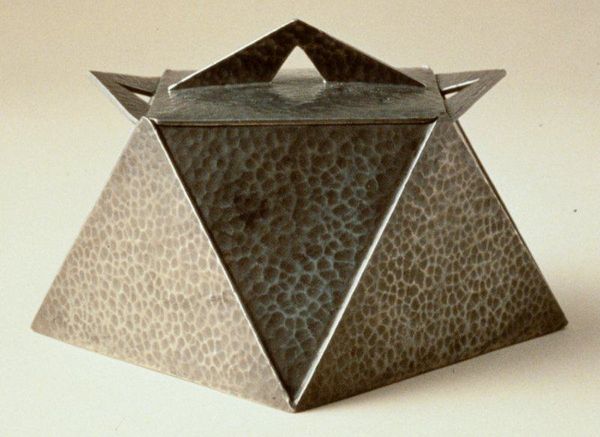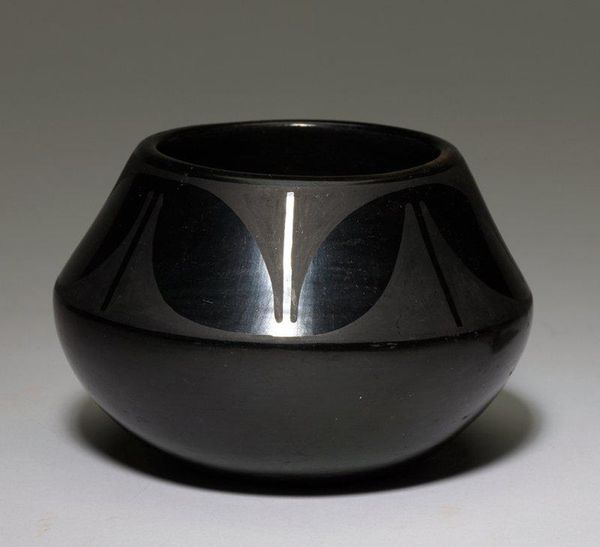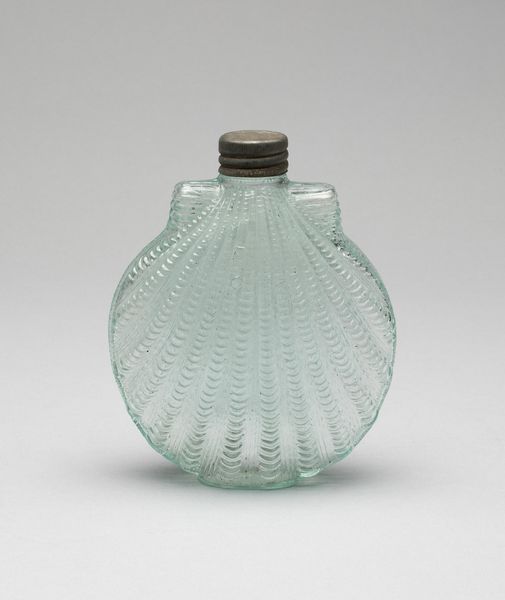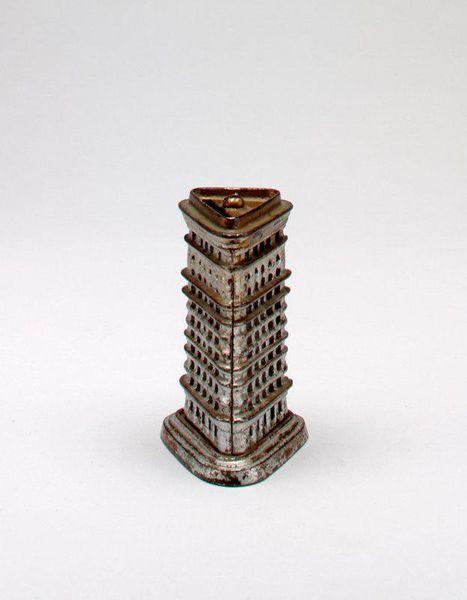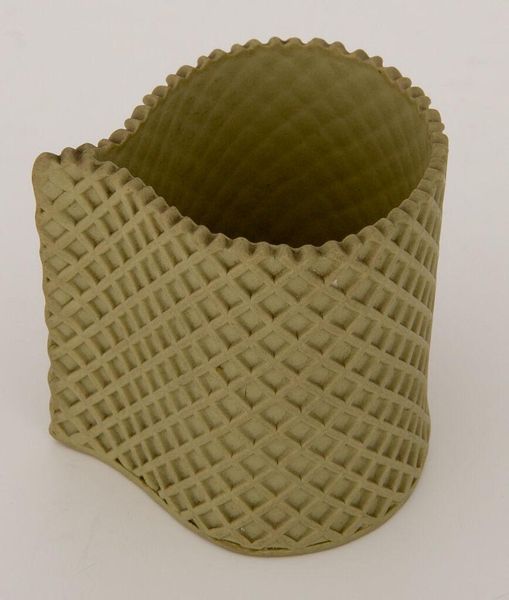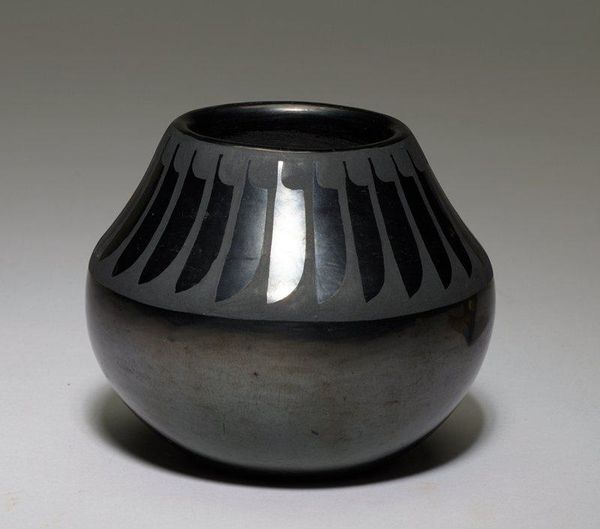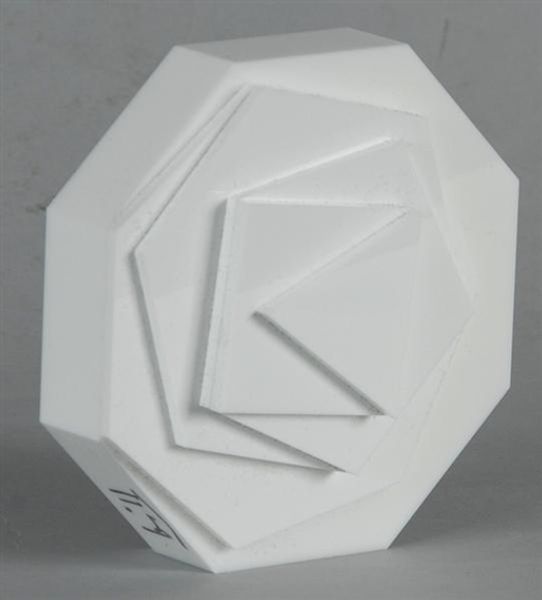
ceramic, sculpture
#
ceramic
#
geometric
#
sculpture
#
ceramic
#
decorative-art
Dimensions: H. 4 1/4 in. (10.8 cm); Diam. 3 1/2 in. (8.9 cm)
Copyright: Public Domain
This covered sugar bowl was created by the Chelsea Keramic Art Works, a pottery factory active in Massachusetts in the late 19th century. It is made of glazed ceramic material, probably white earthenware. What is most striking about this object is its angular form, and the all-over honeycomb texture on its surface. The boxy geometry shows the influence of contemporary design reform movements, which promoted simplified, functional forms. But this isn't just a matter of taste. The relatively flat planes and sharp corners of the sugar bowl would have been conducive to factory production, whether using slip-casting or pressing methods. The overall effect is quite interesting: at once handmade and mass-produced. In the late 19th century, many companies sought to make the decorative arts more available, and affordable, to the middle classes. They embraced mechanization and streamlined production processes. This sugar bowl is a good example, offering a glimpse into a pivotal moment when craft and industry came together to shape our material world.
Comments
No comments
Be the first to comment and join the conversation on the ultimate creative platform.
